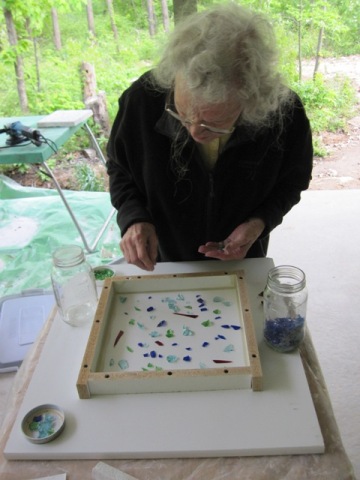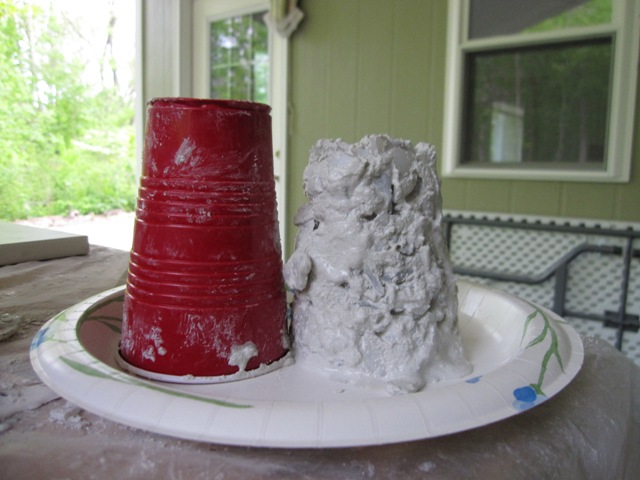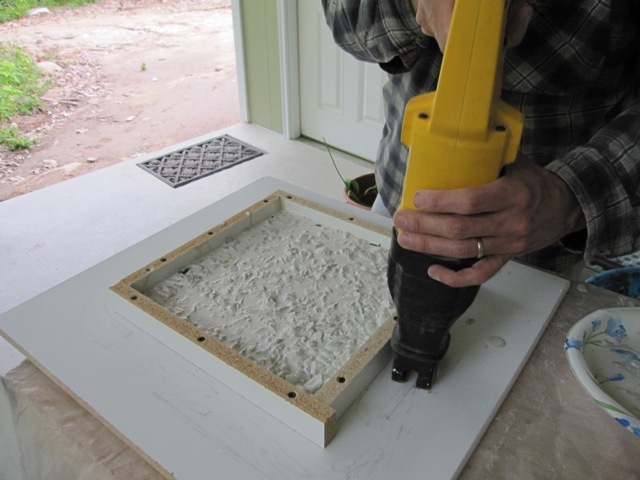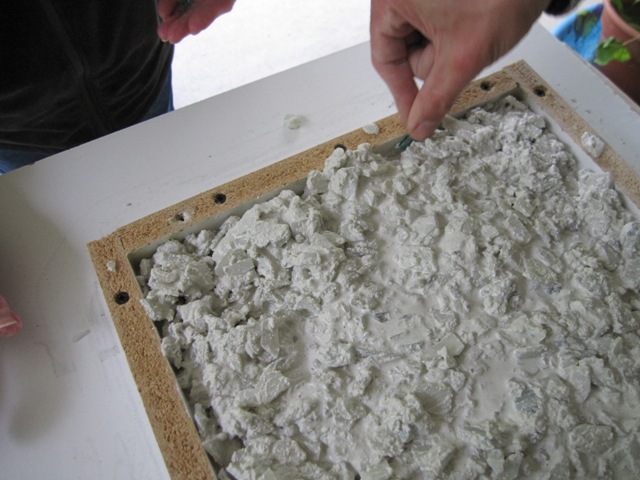May 14, 2010
The results of the first countertop test were pretty good but we wanted some samples of the colors to be used in the cottage bath countertop. The cottage bath has blues and greens in the decorative shower tile so Peggy broke up some blue bottles and arranged the pieces like this:

The first test seemed a bit too sandy so we tried altering the mix by using half as much sand and correspondingly more crushed glass. The result was quite difficult to work with, and even with relatively little water it fell completely apart in the slump test. There seemed to be too much glass aggregate and not enough mortar paste to hold it together and to fill all the spaces in between.

Since the stuff was already mixed, we went ahead and put it into the mold. It didn’t fill the mold completely, and the top looked more like a gravel driveway than a mass of concrete. Obviously the first mix was better but in order to salvage the test we mixed up some more cement and water and poured it over the top to fill in the gaps.


With the second test not looking promising we went ahead with a third test batch, and this time Peggy put in some red glass to see how it will look.


This time we went back to the original recipe. The first slump test was too stiff so we added water, maybe a little too much as the second time it slumped a lot more. This is no problem for a test piece but it would weaken a real countertop to have that much water in the mix.


After filling the mold about half full, we tried a new technique for vibrating the mold to release the air bubbles. Using a reciprocating saw with no blade proved quite effective in vibrating the mold, and made air bubbles rise to the surface. With the mold not quite full, we jammed some pieces of colored glass around the edges. Hopefully they will show after the piece is polished.


The full mold was screeded to level the concrete, then vibrated some more to release the remaining air bubbles (we hope).


May 17, 2010
We diamond-polished the test pieces enough to see how the colors will look. Surprisingly the third test piece showed more glass in its surface even though there was less glass in the mixture. Presumably the more liquid mix and the increased vibration allowed more of the glass to settle to the bottom of the mold. Overall we think they both look fairly good, and this will help us choose the colors for the actual countertops.

